“CALIFORNIA GIRLS” * The Beach Boys * Capitol Records (1965)
![]()
A MCRFB Note: Want more of those ‘classic’ jingles you remember listening to on the radio? You can listen to any of those other jingle packages Motor City Radio Flashbacks has archived to date, thus far. You will find them all in one place, over HERE.
![]()
A MCRFB Note: Motor City Radio Flashbacks was delighted having recently heard from Don Hibschweiler (July 19), formerly Don Riley on WDRQ and formerly Jerry Riley on WAAM. A special ‘THANK YOU” goes out to Don, for sharing his (’70s) WDRQ and WAAM (Ann Arbor) audio airchecks with MCRFB.COM — both as featured here, today.
![]()
 From the MCRFB news archive: 1954
From the MCRFB news archive: 1954
Field Reaps $15,000,000; Radio, Jukeboxes Answers Big Demand
NEW YORK (April 17) — Rhythm and blues records, once limited in sales appeal to the relatively small Negro market, has blossomed into one of the fastest growing areas of the entire record business.
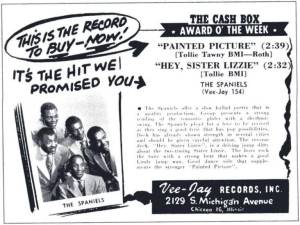
Rhythm and blues record sales last year reached an all-time high of $15,000,000. Indications are that 1954 sales will surpass that mark. The growing popularity of this music is reflected in its wide use by disk jockeys and juke box operators.
More than 700 disk jockeys across the country devote their air time exclusively to rhythm and blues recordings. Many disk jockeys who once restricted their programming only to popular records, are following the change in listener taste by including rhythm and blues selections with their regular popular offerings.
To satisfy the growing demand for this material more than 75 record companies regularly release rhythm and blues recordings. Their combined production effort results in more than 1,000 rhythm and blues records per year.
Teenage Demand
Teenagers have spearheaded the current swing to R&B, and are largely responsible for keeping its sales mounting. The teenage tide has swept down the old barriers which kept this music restricted to a segment of the population.
The present generation has not known the rhythmically exciting dance bands of the swing era. It therefore satisfy its hunger for “music with a beat” in the Earl Bostic, Buddy Johnson, Tiny Bradshaw bands or uses the rhythmically pronounced recordings of the Clovers, Ruth Brown and others, as its dance music.
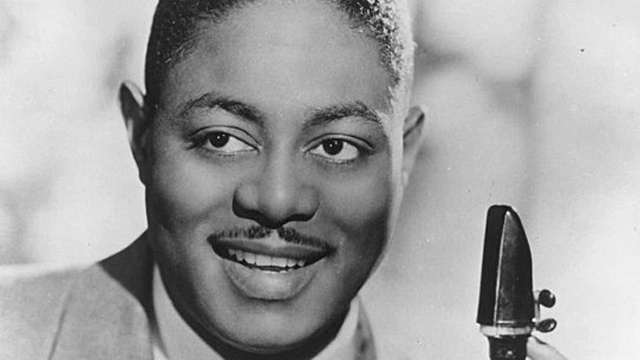
The expansion of this field had resulted in a number of companies who find it highly profitable, devoting their exclusive production to R&B, and spiritual recordings.
Such companies as Atlantic-Cat, Apollo, Savoy, Peacock Duke, Specialty, Modern-RPM, Federal, Aladdin, Chess-Checker, United-States, Chance, Herald, Imperial and others emerge among the strongest independent labels of the entire record industry. In addition to the highly successful firms which specialize in the R&B field are such companies as RCA-Victor, Columbia, Decca, Dot, King and others, which either themselves or through their subsidiary labels issue many R&B records along with their regular record releases in other fields.
Juke Boxes Lead
Juke box operators are credited being among the first to sense the teenage swing to R&B. In noting the youngster preference for this music, they continued to increase its supply on those juke boxes which were exposed to teenage traffic.
This in turn fostered R&B popularity as reflected in requests to disk jockeys and in record stores. Dealers who heretofore didn’t stock R&B records were quick to pick up the ball and are now offering a healthy selection of R&B recordings.
Some California juke box operators say that machines located where young people congregate will show popular records taking a secondary position to R&B recordings. California distributors who specialize in R&B estimate that 35 per cent of their sales volume come directly from the juke box field.
In New York it is no longer uncommon for a box in an average teenage hangout to have at least a few R&B records featuring Dinah Washington, Ruth Brown, The Clovers, Earl Bostic, Tiny Bradshaw, among others. In Miami, boxes in taverns and milk bars in virtually every neighborhood sport R&B records in addition to pop releases.
Country – Wide
Operators in widely-scattered sections of the country have found that many R&B records have a wide enough appeal to go into boxes in any area. Indicative of the expansion of the rhythm and blues market is the large number of retail outlets which previously did not stock these platters, but has since found it necessary and especially profitable to do so.
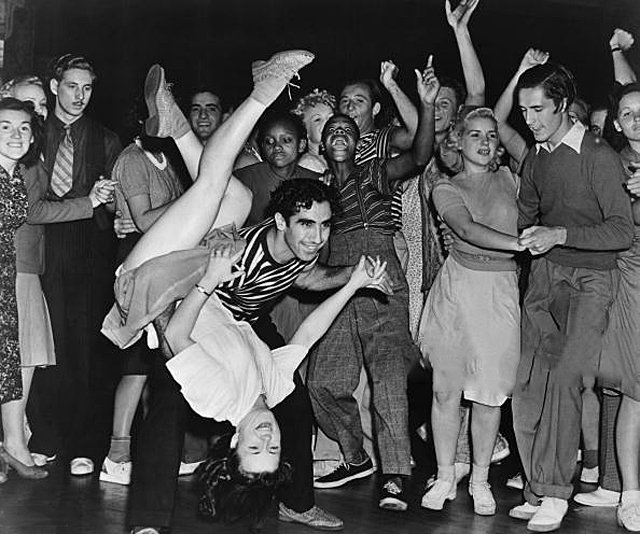
On the West Coast, such class retail outlets as Crawford’s, Martindale’s, and the Gramophone in Beverly Hills, California, now stock rhythm and blues and point to a successful sales volume with the line.
In the main, these stores and others of their type, are thus far only carrying the “hit” or chart listed items, although they’re continually adding to their inventory.
Where it was previously necessary for a teenager to go out of his immediate shopping neighborhood and buy a rhythm and blues recording, it is now the neighborhoods that are adding to their coffers through stocking R&B records. Significantly, some established R&B outlets have noticed a decline in their volume, apparently taken up by the “Johnny come lately’s” who now stock rhythm and blues.
Another Sign
Another sign that the popularity of rhythm and blues records is seen by the large number of record buyers of Mexican and Spanish descent who are avid devotees of the field. Music operators in routes in areas predominantly populated by Latin Americans report that this group has long been staunch supporters of R&B music.

A tremendous market exist in this Latin-American field in an area that spreads through West Texas, New Mexico, Arizona and California. Distributors in Dallas, Houston, El Paso and Los Angeles report that Latin Americans are among their largest buyers of rhythm and blues records. American disk jockey shows they frequently play rhythm and blues, along with similarly operated retail outlets which stock the line.
There has been an upsurge in the number of broadcast hours R&B records are played in cities all over the country. In Los Angeles there re more R&B jockeys than there were a year ago, and the pop jockey are spinning more R&B records. About 23 hours of R&B disks are played daily on eight Los Angeles stations. The same is true in Chicago and New York.
Air Time
In Chicago the increase in R&B records on the air is an increase about 20 percent over a year ago, and the increase is greater in New York.
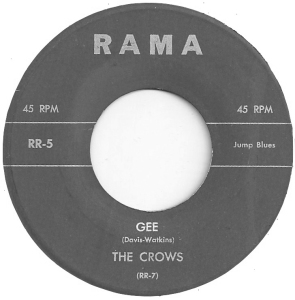
It is true that many pop jockeys are playing those R&B records such as “Gee” and “Crying In The Chapel,” but a few years ago even these hits were not played. Where pop jockeys are not spinning R&B records, the need is being fulfilled by more R&B air time. Audiences today are estimated by many jockeys to be 20 to 30 percent white listeners, in both the large cities and the Southern towns.
The increasing importance of R&B records and the growing appeal of many artists in the field are illustrated by some of the exceptionally successful dances and shows featuring R&B talent and produced by deejays in various sections of the country.
Probably the most remarkable record is held by Alan (Moondog) Freed, of station WJW in Cleveland. Freed’s “Coronation Ball” at the Cleveland Arena in March, 1952, which used all R&B talent, including singers and ork, attracted 25,000 people, with thousands turned away. This is one of the largest crowds to attend a dance since WWII. In July of 1952, a Freed dance at the Summit Beach Ballroom in Akron attracted over 3,000 people at $2 per person with thousands turned away. In July, 1953, at the Freed “Rhythm And Blues Show” at the arena in Cleveland, there were 10,000 paid admissions at a $3 top.
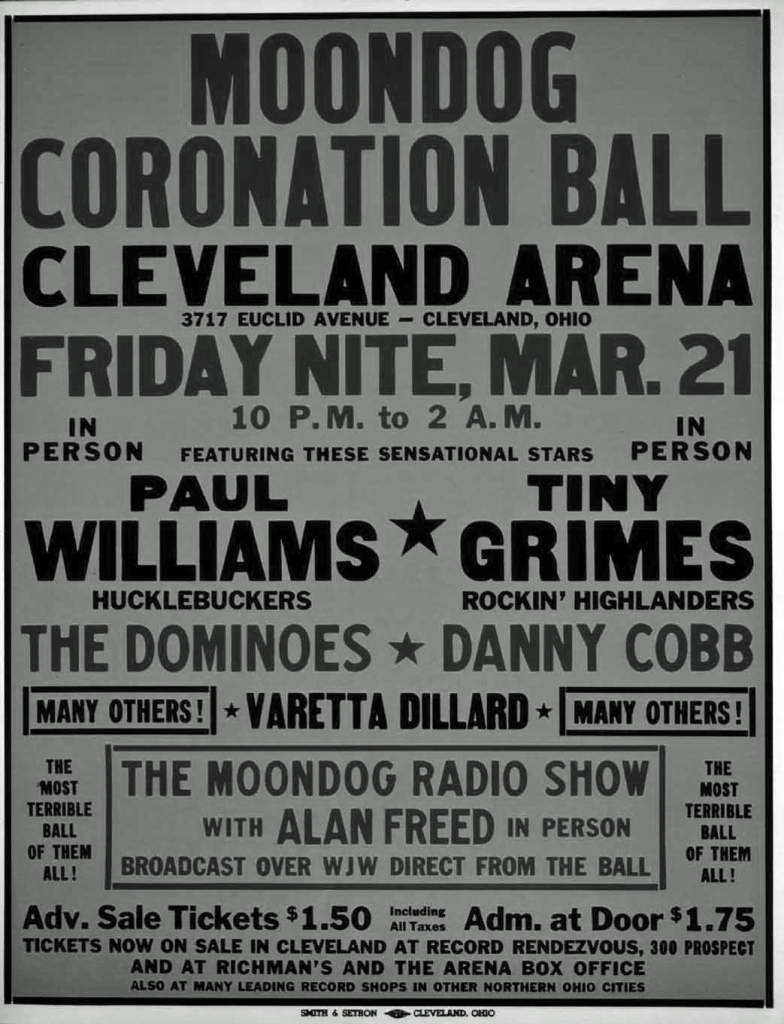
Freed’s P. A.’s
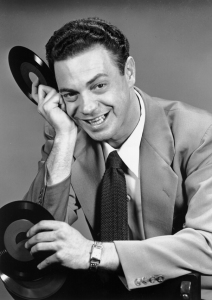
Freed, with his manager Lou Platt, has staged a number of other shows and dances since then, with each attracting over 3,000 people, and again with many thousands invariably turned away. Here again, according to Lou Platt, up to one-third of the audience was composed of white teenagers, pointing out again the appeal of the R&B among whites as well as Negroes.
A check among R&B record firms and R&B distributors on the East and West Coast shows that they are now servicing pop stations and shows as well as R&B deejays with certain releases. They had found it to be a worthwhile policy to do so, since a pop jockey’s spinning an R&B disk can help increase the sales tremendously. The Crows’ recording of “Gee” on Rama Records, which is a hit both in the Pop and R&B markets, added thousands of additional sales due to the spins given by pop disk jockeys.
The appeal of R&B disks to more than just a limited market is also shown in the records made by pop artists and repertoire of burgeoning of R&B hits. The latest in a series are the records made of “Such A Night,” which was first released by Clyde McPhatter on Atlantic.
Johnny Ray, Bunny Paul and Jane Turzey made the record after the McPhatter record started to take off. This is merely the most recent case of covering an R&B record; the tradition goes back a number of years. However, in most cases the original record, the R&B disk, often sells more than the pop versions. This could be the case with “Such A Night” as well.
As R&B artists grow both in experience and popularity, they usually have a chance to break thru as pop artists and increase both their earning power in the business.
This is happening today with many artists as their records break through in the pop field. The Earl Bostic Band, the Dominoes, the Orioles, Dinal Washington, Ruth Brown and others have managed to build up as almost as strong an appeal in the pop market as they have in the R&B field. According to all indications, as the R&B market continues to expand this standard, this will happen with more and more artists gaining popularity in the rhythm and blues field.
(Information and news source, Billboard; April 24, 1954).
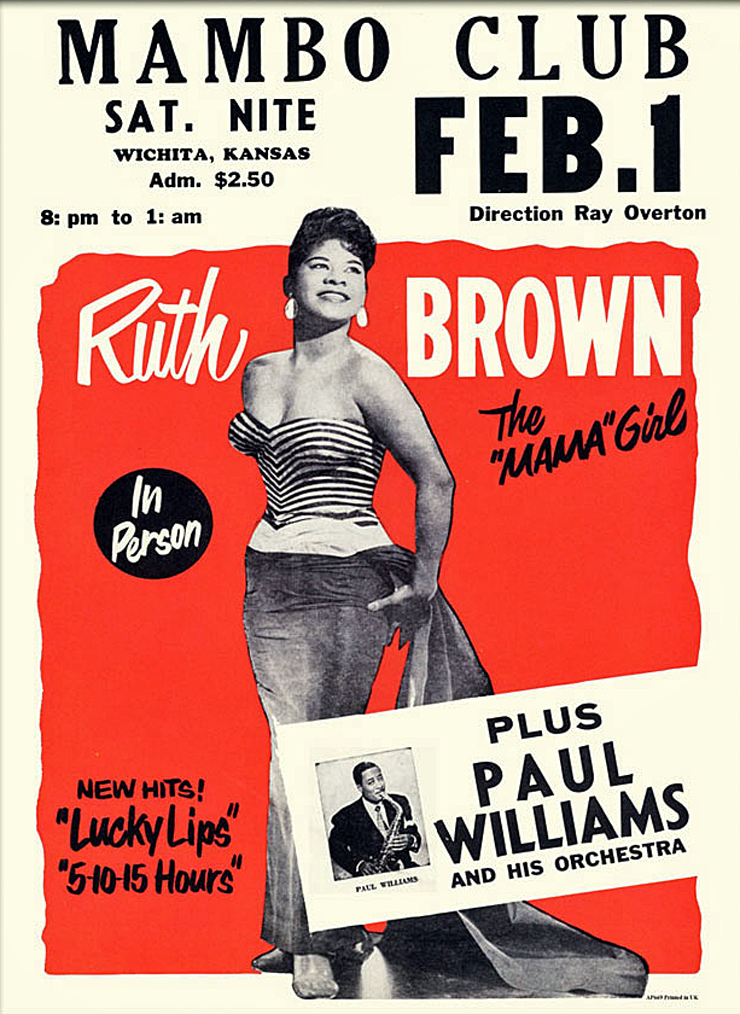
![]()
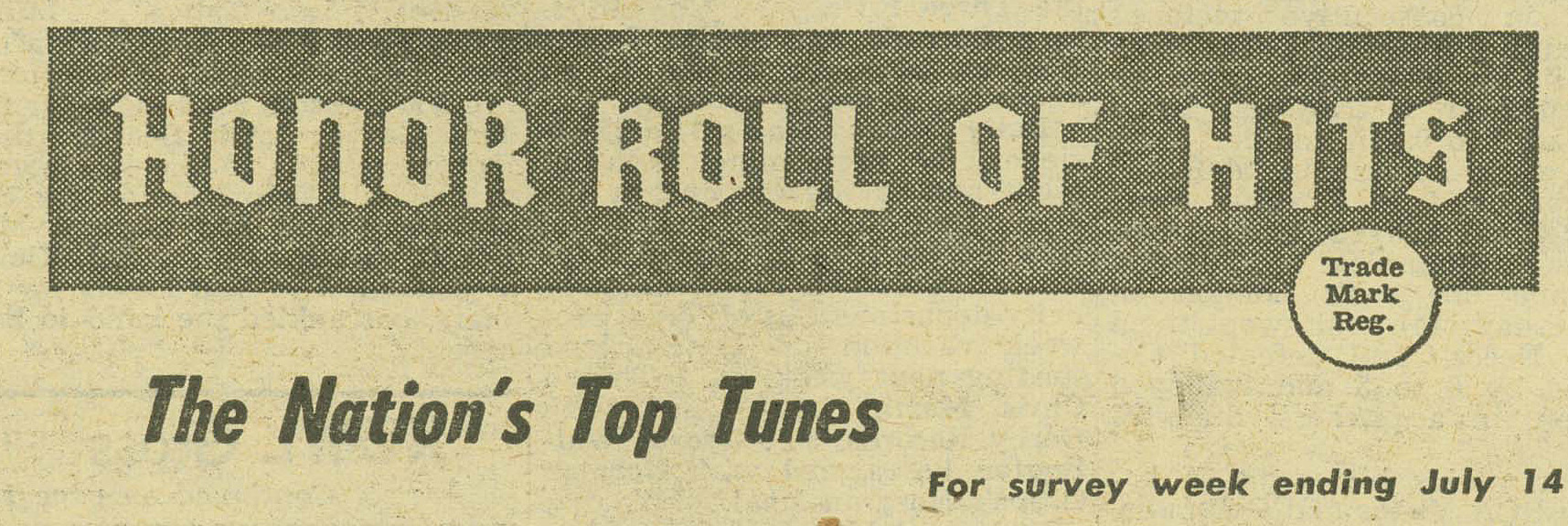




A MCRFB VIEWING TIP
To fully appreciate this Billboard Honor Roll Of Hits July 14, 1954 (week ending July 14) chart feature click on image 2x and open to second window for large detailed view. Click image anytime to return to NORMAL image size.
Click your server’s back button to return to MCRFB home page.
On your mobile device? Tap on images. Open to second window. “Stretch” image across your device screen to magnify for largest print view.

![]()
MEMORIES OF THE BIG 8 — Big Jim Edwards — PART 2
1968-1969
By JIM DAVIS
(MCRFB Note: Before starting — missed PART 1? Please go here) —
Paul Drew was a disciplinarian. He worked hard, walked fast, listened to his station intently, listened to the competition, expected the best from his staff, would not accept mediocrity, and was constantly chewing on the end of a magic marker. Because of the union at the station, the DJ’s didn’t run their own consoles. That position was occupied by “T.T. ops” (Turn-table operators). His tolerance for a bad “op” was measured in seconds. The best of the ops were for the most part frustrated disc jockeys. Some of them were fantastic….others, not so.
During my 3 years at the station I watched 43 men (no female ops) come and go from their positions. Most of them were T.T. ops that either were fired or quit under the extreme pressure.
Paul expected his jocks to be at the station one hour prior to the air-shift to prepare. That meant reading over the memorandum of instructions (there were many), reviewing alterations to the playlist, practicing live copy, and generally getting “psyched up” to kick the Big 8 in gear.
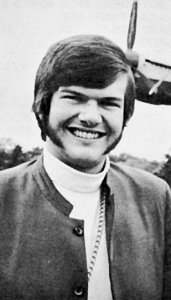
One winter morning, I had a dead battery which delayed my usual 45 minute drive from Farmington to Windsor by 15 minutes which meant that I would be arriving at the station only 45 minutes prior to my show. Paul checked with the guard gate and found that I was late in arriving. And in a quick phone call, he alerted me that he mandated one hour of preparation time, and that I was not to go on the air until 6:15AM. I wonder today if any program director cares enough to demand their air talents “best effort”?
Paul also had high expectations of himself. He never punched a clock; many times arriving at the station in the wee small hours of the morning. He had a transistor radio with him at all times and rarely missed a set. After doing the all night show for a couple of months when Billy Mack (Kris Eric Stevens) resigned, I was convinced Paul never slept.
The porch lamp in the studio known as the “Batphone” was connected to the PD’s private phone line. If the lamp lit, you could count on the fact that an error had been made. However, Paul always handled the calls with diplomacy and as a professional.
I never heard him raise his voice, although he could be very direct, and sometimes cutting. Example: There was a Mike Rivers “groupie” named Susan who desperately wanted to be the first female Big 8 jock. One day, she was in the lunch room at the station when Paul cruised through. I stopped him and introduced him to Susan. In a burst of energy she said “I’d really like to work here at the Big 8.” Paul’s response: “With a nasal voice like that, you’re wasting your time. You’ll never make it” and without missing a step, he continued walking into the music library. She was crushed. But, in less than 5 seconds he had told her the truth (the rest of us couldn’t). She didn’t have what it took to make it, and was not Big 8 material. Sometime, the truth hurts.
Paul made sure that his jocks got exposure and were always in the limelight. I met many of the Motown artists; MC’d at the (still) popular Roostertail (Paul was friends with the owners, the Tom and Jerry Schoeniths). I even got to host the Robin Seymour “Swingin Time” TV dance show on Channel 9. And, in a highlight I’ll never forget, I got to DJ an elite socialite dance for (a then young) Edsel Ford.
1968 was a busy year. Detroit was still reeling from the riots a year earlier. The Vietnam War took a swing with the Tet Offensive. Martin Luther King was murdered in April. Two months later, Robert F. Kennedy lost his life. And the Detroit Tigers took home the 1968 Pennant as Denny McLain in 1968 became the last pitcher in Major League Baseball to win 30 or more games during a season (31–6) — a feat accomplished by only thirteen players in the 20th century.
Each of these stories were brought to life by CKLW 20/20 news headed up by Dick Smythe who took his news as seriously as Paul Drew took his programming. At one point, CKLW news employed 27 people. Dick taught his people to write with flair utilizing colorful adjectives and descriptive adverbs. The news was full of alliteration and sometimes extremely graphic. I’m convinced that CKLW news was a “tune-in” rather than a “tune-out.”
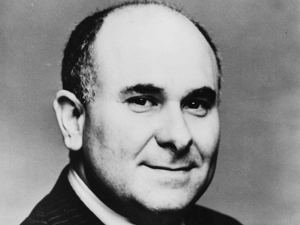
Paul Drew and his team had brought unmatched success to the Big 8. Within a few months, the competition had been leveled. It was game over for WXYZ and WKNR. Meanwhile, CKLW gained number one status not only in Detroit, but in distant markets like Erie, PA; Fort Wayne, IN; Cleveland, OH; and even my beloved Toledo where I had cut my teeth for the Big 8.
One afternoon in ‘68, Paul called an “all staff” meeting which was his one and only during my time with him. He announced “it was time to go play pool on a bigger pool table.” He was exiting to join the Storer operation in Philly and would be running WIBG.
There was a huge let-down as the news filtered throughout the building. Could we sustain the amazing growth and level of professionalism the station had achieved? Only time would tell.
Gary Mack (MacDowell) who was highly respected in the Drake-Chenault organization would fill the gap temporarily until Jim O’Brien (Oldham) arrived. Jim had stints with Drake at KHJ, Los Angeles and WOR-FM in New York. Jim was an intense, and serious person, dedicated to his own personal success, as well as the company he was working for. He had a voice as big as the State of Texas, where he was born in. He had a young daughter Peri Gilpin (Oldham) that went on to have a famous career of her own as the character Roz on the Frasier television show.
Tragically, Jim was killed in 1983 during a parachute dive while saving the life of another skydiver. Jim’s stay at the Big 8 was brief. He was followed by Captain Showbiz Ted Adkins who brought a sense of camaraderie back to the station. However, Ted was needed in San Francisco at KFRC. All of these changes happened within a year. The Big 8 needed a leader…. And at just the right time, like magic…. Paul Drew returned. CKLW was in capable hands again.
___
(Second of 3 parts, to be continued; – Part 3 — Tuesday, July 28, 2015)

A MCRFB Note: Jim Edwards, CKLW
___
Motor City Radio Flashbacks recently heard from Jim Davis (July 9, 2015), the former Big 8 jock known as ‘Big Jim’ Edwards on CKLW. A special ‘THANK YOU’ goes out to Jim Davis for sharing his Big 8 recollections with us — today — exclusively here on MCRFB.COM. The SECOND of a three part series, we will publish the THIRD and final part of Jim Davis’ CKLW memories he authored, entitled, “1970,” next Tuesday, July 28, 2015.
Missed Part 1? GO HERE.

![]()